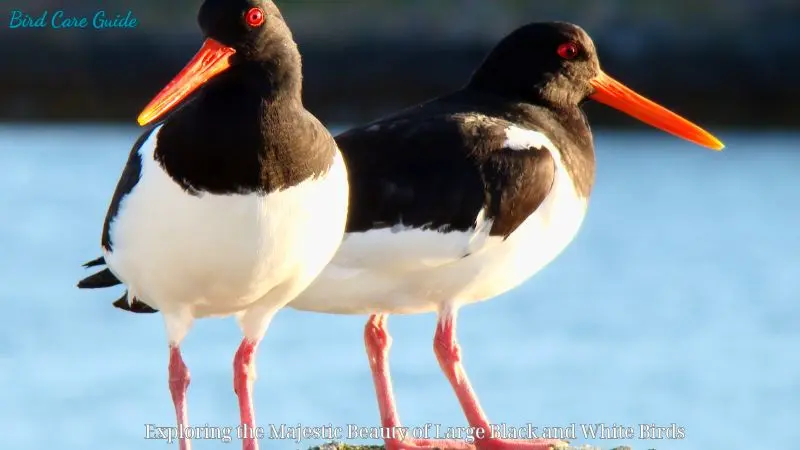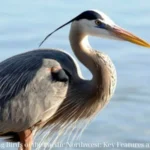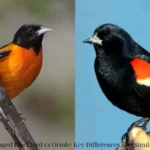Birdwatching is a hobby that offers a glimpse into the extraordinary diversity of avian life around us. Among the myriad of bird species, large black and white birds stand out for their striking contrast and impressive sizes. Bird Care Guide explores the majestic beauty of these birds, delving into their characteristics, habitat, behavior and role in the ecosystem.
The Unique Appeal of Large Black and White Birds
Large black and white birds possess a unique charm due to their distinctive plumage and impressive stature. The contrasting colors make them easily identifiable, and their size often makes them the focal point in any habitat they inhabit. This combination of features not only makes them fascinating to observe but also easy to spot, making them favorites among birdwatchers.
Notable Species of Large Black and White Birds

There are several species of large black and white birds that are renowned for their beauty and distinctive features. Here, we will highlight some of the most notable ones:
1. Magpie (Pica pica)
The European Magpie is one of the most recognizable large black and white birds. With its long tail, striking plumage, and intelligent behavior, it is a common sight in both urban and rural areas.
- Appearance: The Magpie has a black head, neck, and breast, with a white belly and shoulders. Its wings and tail are black with iridescent blue and green hues.
- Habitat: Magpies are highly adaptable and can be found in a variety of environments, from forests and farmland to urban parks and gardens.
- Behavior: Known for their intelligence, Magpies are curious and social birds. They are also known for their vocalizations and can mimic sounds from their environment.
2. Pied Avocet (Recurvirostra avosetta)
The Pied Avocet is a striking wader known for its elegant appearance and distinctive feeding behavior.
- Appearance: This bird features a black and white plumage with a long, upturned bill and long legs. The black markings on its wings and head contrast sharply with its white body.
- Habitat: Pied Avocets are typically found in shallow wetlands, salt flats, and coastal lagoons.
- Behavior: These birds feed by sweeping their upturned bills side to side in shallow water to catch small invertebrates.
3. Black-and-white Hawk-Eagle (Spizaetus melanoleucus)
A powerful raptor, the Black-and-white Hawk-Eagle is a sight to behold in the wild.
- Appearance: This eagle has a striking black and white plumage, with a black head and upperparts, and white underparts. It also has distinctive black bars on its wings and tail.
- Habitat: It inhabits tropical forests in Central and South America, often seen soaring above the canopy.
- Behavior: This raptor is known for its agility and strength, preying on birds and small mammals.
4. Oystercatcher (Haematopus ostralegus)
The Eurasian Oystercatcher is easily recognizable with its bold black and white plumage and bright red bill.
- Appearance: This bird has a black head, back, and wings, with a white underside. Its long, red bill and pink legs are distinctive features.
- Habitat: Oystercatchers are commonly found along coastlines, mudflats, and estuaries.
- Behavior: They feed primarily on shellfish, using their strong bills to pry open shells or to probe for invertebrates in the mud.
5. Black-billed Magpie (Pica hudsonia)
The Black-billed Magpie, found in North America, is similar to its European cousin but with some distinct differences.
- Appearance: It has black and white plumage with a long, iridescent tail. The bill is black, and it has white patches on its wings.
- Habitat: Black-billed Magpies are found in open habitats such as grasslands, meadows, and along streams and rivers.
- Behavior: These birds are known for their complex social structures and intelligence. They are also highly vocal and can mimic sounds.
Habitat and Distribution
Large black and white birds can be found in various habitats across the globe. Their adaptability allows them to thrive in different environments, from wetlands and coastal areas to forests and urban settings.
1. Wetlands and Coastal Areas
Species like the Pied Avocet and the Oystercatcher are commonly found in wetlands and coastal areas. These habitats provide abundant food sources, such as small invertebrates and shellfish, which are essential for their survival. Wetlands also offer nesting sites and protection from predators.
2. Forests
Raptors like the Black-and-white Hawk-Eagle inhabit dense tropical forests. These environments offer a rich prey base and tall trees for nesting and hunting perches. Forests also provide cover and protection, which are crucial for the survival of these large birds.
3. Urban and Rural Areas
Magpies, both in Europe and North America, are highly adaptable and can thrive in urban and rural environments. They are often seen in parks, gardens, and farmland, where they forage for a variety of food items, from insects and small animals to human scraps.
Behavior and Diet
The behavior and diet of large black and white birds vary significantly depending on the species and their habitat. However, some commonalities can be observed:
1. Intelligence and Social Structure
Many large black and white birds, such as Magpies, are known for their intelligence. They exhibit complex social behaviors, including cooperative breeding and sophisticated communication. Magpies, for instance, are capable of recognizing themselves in mirrors, a sign of self-awareness that is rare in the animal kingdom.
2. Feeding Techniques
Feeding techniques among these birds are diverse. For example, the Pied Avocet feeds by sweeping its bill through the water to catch small invertebrates, while the Oystercatcher uses its strong bill to pry open shellfish. Raptors like the Black-and-white Hawk-Eagle hunt by soaring high and diving onto their prey with great speed and precision.
3. Nesting and Reproduction
Nesting habits also vary widely. Magpies build large, dome-shaped nests in trees, using sticks and mud. They are known to be highly protective of their nests, often attacking potential threats. On the other hand, Oystercatchers typically nest on the ground, making shallow scrapes in the sand or gravel where they lay their eggs.
Ecological Importance
Large black and white birds play crucial roles in their ecosystems. They help control insect and rodent populations, disperse seeds, and contribute to the health of their habitats.
1. Pest Control
Many of these birds feed on insects and small rodents, helping to control pest populations. For instance, Magpies consume a large number of insects, which can benefit agricultural areas by reducing crop damage.
2. Seed Dispersal
Some species, such as Magpies, also contribute to seed dispersal. By eating fruits and berries and then excreting the seeds, they help propagate various plant species, contributing to the biodiversity of their habitats.
3. Indicators of Environmental Health
Birds are often considered indicators of environmental health. The presence and abundance of large black and white birds in an area can signal a healthy ecosystem with a balanced food web and clean habitats.
Conservation Status and Efforts
While some large black and white birds are thriving, others face threats from habitat loss, pollution, and climate change. Conservation efforts are crucial to protect these species and their habitats.
Threats
- Habitat Loss: Urbanization, deforestation, and agricultural expansion are major threats to many bird species. Loss of wetlands and coastal areas particularly affects birds like the Pied Avocet and Oystercatcher.
- Pollution: Pollution, especially plastic and chemical contaminants, poses significant risks to birds. Ingesting plastics can lead to malnutrition and death, while chemicals can affect their reproductive success.
- Climate Change: Changing climate patterns can alter habitats and food availability, impacting bird populations. Migratory birds are especially vulnerable, as they rely on specific habitats and food sources along their migration routes.
Conservation Efforts
- Protected Areas: Establishing and maintaining protected areas, such as national parks and wildlife refuges, is crucial for conserving bird habitats. These areas provide safe havens where birds can live and breed without the threat of habitat destruction.
- Restoration Projects: Wetland and forest restoration projects can help restore habitats that have been degraded. These projects often involve reforestation, wetland creation, and the removal of invasive species.
- Public Awareness: Educating the public about the importance of bird conservation can lead to greater support for conservation efforts. Initiatives such as birdwatching programs and citizen science projects can engage people in conservation activities.
Conclusion
Large black and white birds are not only visually stunning but also play vital roles in their ecosystems. Their striking plumage and impressive size make them a joy to observe, while their ecological contributions support habitat health.
Understanding their behavior, habitats, and conservation needs is crucial for their survival. By protecting their habitats, reducing pollution, and addressing climate change, we can preserve these majestic birds for future generations.
Whether you’re an avid birdwatcher or a casual nature enthusiast, appreciating and protecting these birds fosters a deeper connection with nature. So, grab your binoculars, head out into nature, and experience the awe-inspiring beauty of large black and white birds in their natural habitats.





